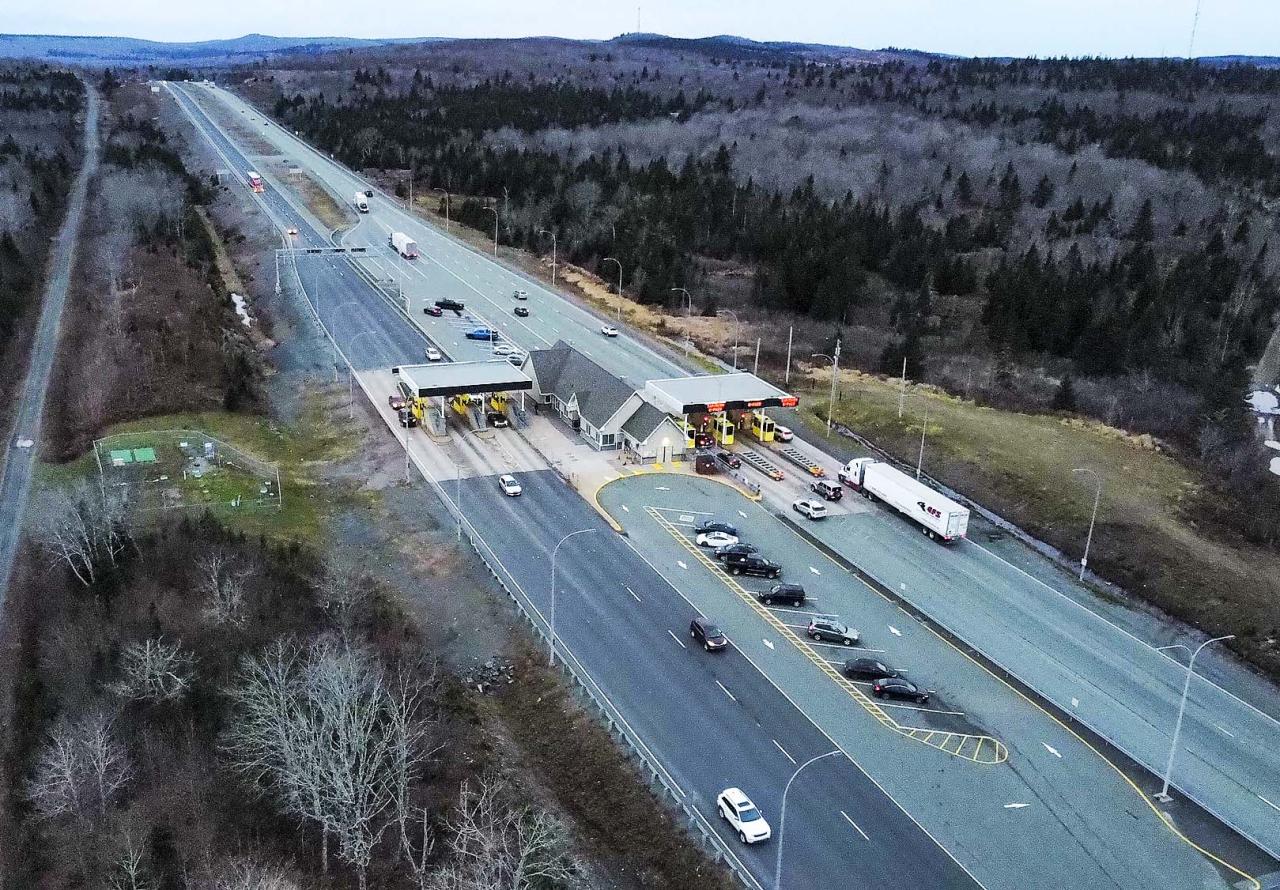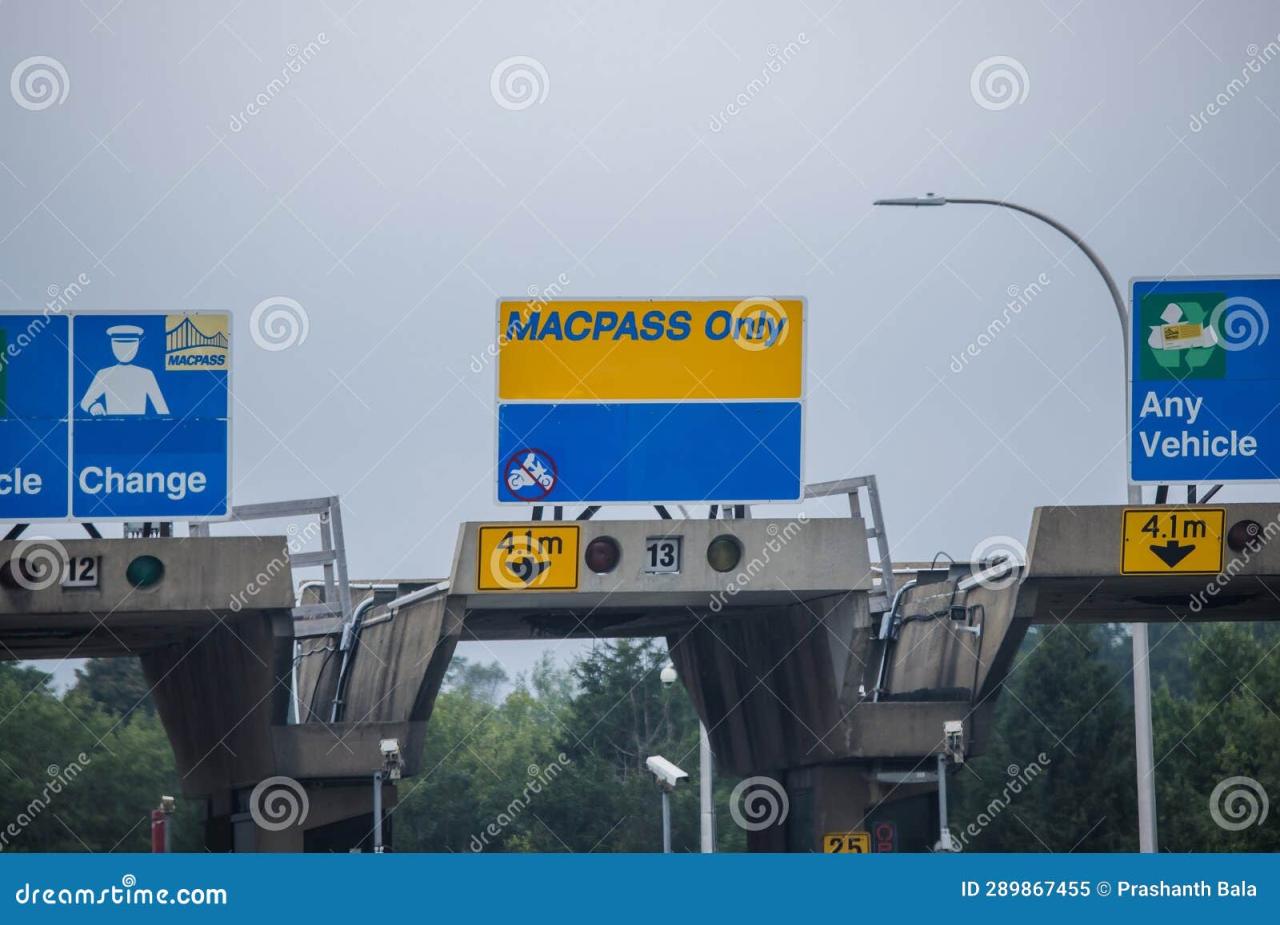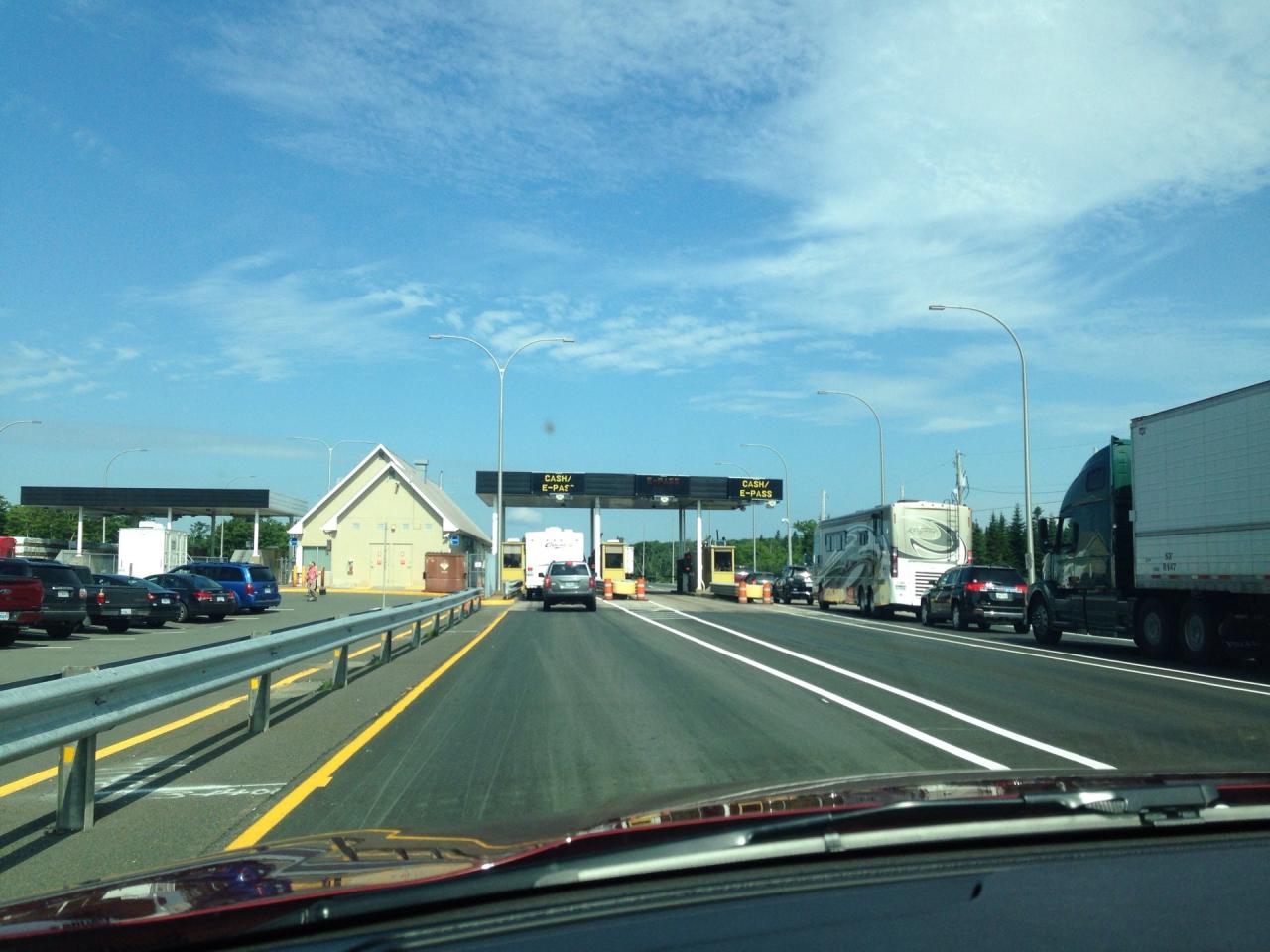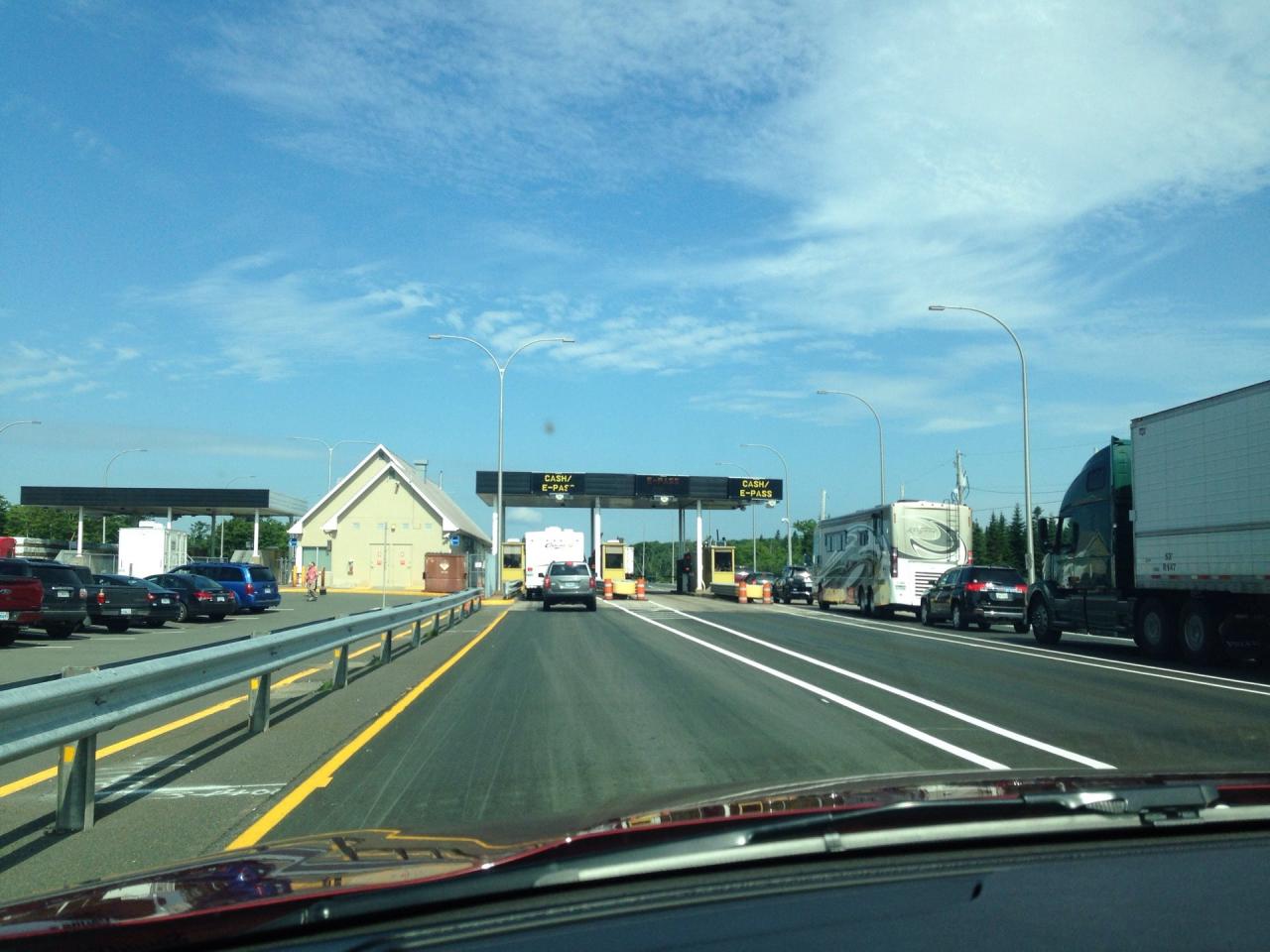Cobequid Pass Camera provides real-time views of traffic conditions along this vital transportation route. This system plays a crucial role in ensuring driver safety and efficient traffic flow, leveraging advanced technology to monitor and manage traffic in various weather conditions. Understanding its capabilities and limitations is key to appreciating its impact on daily commutes and emergency response.
From its strategic camera placements and high-resolution imaging to the user-friendly interface for accessing live and archived footage, the Cobequid Pass Camera system offers a valuable resource for drivers and transportation authorities alike. This overview explores the system’s functionality, maintenance, and security aspects, highlighting its contribution to improved road safety and traffic management.
Cobequid Pass Traffic Conditions: Cobequid Pass Camera
Understanding traffic patterns on Cobequid Pass is crucial for safe and efficient travel. This section details typical traffic flow, the impact of weather, and variations between weekdays and weekends, including a hypothetical major incident scenario.
Typical Traffic Patterns
During peak hours (generally 7:00 AM to 9:00 AM and 4:00 PM to 6:00 PM), Cobequid Pass experiences significant congestion, especially during the commuting periods. Off-peak hours see considerably lighter traffic volume. Traffic flow is generally smoother during overnight hours.
The Cobequid Pass camera provides a captivating real-time view of the Nova Scotia landscape. Thinking about large-scale visual displays, one might compare this to the spectacular aerial artistry of a drone show, such as the impressive orlando drone show , which offers a completely different, yet equally breathtaking, spectacle. Returning to the Cobequid Pass camera, its steady feed offers a unique, peaceful contrast to the dynamic energy of a drone light show.
Impact of Weather Conditions
Adverse weather significantly impacts traffic flow. Heavy snowfall can lead to closures or extremely slow speeds due to reduced visibility and hazardous road conditions. Fog similarly restricts visibility, causing delays and accidents. Rain, while less disruptive than snow or fog, can still reduce traction and increase braking distances, leading to slower speeds and increased congestion.
Weekday vs. Weekend Traffic
Weekday traffic volume is consistently higher than on weekends. Weekends see a noticeable decrease in traffic, particularly during the day, as commuter traffic is significantly reduced.
Hypothetical Major Traffic Incident
Imagine a multi-vehicle accident during peak hour on a snowy day. The resulting road closure would cause major congestion, potentially leading to significant delays of several hours for motorists. Emergency services would be dispatched, and detours would likely be implemented, causing further disruption to surrounding roadways.
Traffic Density Table
| Time of Day | Day of Week | Weather Conditions | Estimated Traffic Density |
|---|---|---|---|
| 7:00 AM – 9:00 AM | Monday – Friday | Clear | High |
| 12:00 PM – 2:00 PM | Monday – Friday | Clear | Medium |
| 7:00 AM – 9:00 AM | Saturday – Sunday | Clear | Low |
| 7:00 AM – 9:00 AM | Monday – Friday | Heavy Snow | Very Low (Potential Closure) |
Cobequid Pass Camera Locations and Coverage
A network of strategically placed cameras monitors traffic flow along Cobequid Pass. This section details their locations, coverage, image quality, and technical specifications.
Camera Locations and Coverage Areas
Cameras are positioned at key locations along the pass, including entry and exit points, areas prone to congestion, and stretches with challenging curves or inclines. Each camera has a specific viewing angle, designed to capture a broad section of the roadway. For example, a camera at a sharp bend might have a wider angle to cover the entire curve and approaching traffic.
Another camera near an intersection might focus on the intersection itself and the merging lanes.
Illustrative Map
Imagine a map of Cobequid Pass with numbered points indicating camera locations. Each point would be connected to an area representing the camera’s field of view, illustrating the overall coverage of the system. Areas with overlapping coverage would show the redundancy built into the system. The map would visually represent the strategic placement of cameras to maximize coverage and monitoring capabilities.
Camera Image Quality and Specifications
The cameras used along Cobequid Pass are high-resolution, capable of capturing clear images even in low-light conditions. They likely incorporate features such as night vision and weatherproofing to ensure consistent performance. The visual quality is generally consistent across cameras, although slight variations may exist due to factors like lighting and environmental conditions. Specific details about resolution, lens type, and other technical specifications are not publicly available for security reasons.
Cobequid Pass Camera System Functionality
The Cobequid Pass camera system plays a vital role in traffic management and safety. This section describes its technology, monitoring methods, data handling, and contribution to overall road safety.
System Purpose and Function
The primary function of the Cobequid Pass camera system is to monitor traffic flow in real-time, providing valuable data for traffic management and emergency response. This real-time data helps identify potential hazards, such as accidents or congestion, allowing for proactive interventions to minimize disruption and improve safety.
Technology and Image Transmission
The system likely employs high-definition IP cameras connected to a network for real-time image transmission. Images are likely compressed to optimize bandwidth usage and transmitted to a central monitoring station. Redundant network connections and backup systems ensure uninterrupted operation.
Monitoring and Management

The system is continuously monitored by trained personnel at a central location. Automated alerts are triggered for specific events, such as low visibility conditions or traffic incidents, enabling rapid response. The system is designed for remote management, allowing for adjustments and maintenance without physical site visits whenever possible.
Data Storage and Retrieval
Camera footage is stored securely for a defined period, allowing for review in case of incidents or investigations. Data retrieval is facilitated through a user-friendly interface, enabling efficient access to recorded footage. Data security measures are in place to protect against unauthorized access or data breaches.
Contribution to Traffic Management and Safety
The system significantly contributes to traffic management by providing real-time data on traffic flow, allowing for proactive adjustments to traffic patterns, and timely alerts about potential hazards. Its role in incident detection and response enhances road safety by enabling faster emergency response times and minimizing the impact of accidents.
User Experience with Cobequid Pass Camera Images
The accessibility and usability of the camera feeds are crucial for drivers. This section assesses the user interface, navigation, image clarity, and potential improvements, including user stories illustrating both positive and negative experiences.
User Interface and Navigation
A user-friendly interface is essential for accessing live and archived camera feeds. Ideally, the interface should be intuitive, allowing users to easily select specific cameras and view live feeds or browse archived footage. Clear labeling and visual cues would further enhance usability.
Step-by-Step Guide
To access the system, a user would typically navigate to a designated website or application. They would then select the desired camera location from a map or list. Live feeds would be displayed immediately, while access to archived footage might require specifying a date and time range. Users could zoom in or out for better detail, and controls for pausing, rewinding, and fast-forwarding the footage should be readily available.
Image Clarity and Usefulness
The clarity of the camera images is critical for their usefulness to drivers. High-resolution images with good lighting and minimal distortion would provide a clear view of traffic conditions, enabling drivers to make informed decisions about their routes and speed. Poor image quality, however, would diminish the system’s value.
The Cobequid Pass camera provides a fascinating real-time view of Nova Scotia’s landscape. Thinking about the scale of such a project, it’s interesting to consider the technological advancements seen in large-scale visual displays, such as the spectacular florida drone show , which utilizes hundreds of drones for breathtaking choreography. The precision and coordination required for that show are equally impressive as the steady, reliable feed from the Cobequid Pass camera.
Potential Improvements
Potential improvements include enhancing the interface for mobile devices, adding features such as traffic speed overlays, and providing real-time weather information alongside the camera feeds. Integration with navigation apps could also significantly improve the user experience.
User Stories
Positive User Story: “As a driver, I easily accessed the Cobequid Pass camera feeds on my phone and saw that there was heavy snow ahead. I was able to adjust my route and avoid a potential hazardous situation.”
Negative User Story: “As a driver, I tried to access the camera feeds, but the website was slow and the images were blurry. I couldn’t get a clear picture of the traffic conditions and ended up stuck in a traffic jam.”
Cobequid Pass Camera System Maintenance and Upkeep
Maintaining the Cobequid Pass camera system is crucial for its continued reliable operation. This section details the maintenance procedures, frequency of checks, challenges, and camera lifespan.
The Cobequid Pass camera provides a fascinating real-time view of Nova Scotia’s landscape. Thinking about the potential for mishaps with such technology, it’s worth considering incidents like the recent florida drone accident , highlighting the importance of responsible operation and safety regulations. Understanding these risks is crucial, especially when considering the implications for similar remote monitoring systems like the Cobequid Pass camera.
Maintenance Procedures and Frequency, Cobequid pass camera
- Regular cleaning of camera lenses to remove dirt, dust, and debris.
- Periodic inspection of network connections and system components.
- Software updates and security patches to address vulnerabilities and improve performance.
- Preventive maintenance to address potential issues before they cause system failures.
- System-wide checks are performed at least once a week, with more frequent checks during adverse weather conditions.
Challenges of Harsh Weather
Maintaining cameras in harsh weather conditions presents significant challenges. Snow, ice, and extreme temperatures can damage equipment and disrupt network connectivity. Regular inspections and preventative maintenance are crucial to mitigate these risks. Specialized weatherproofing and robust equipment are necessary to ensure reliable operation in challenging weather.
Camera Lifespan and Replacement
- Cameras typically have a lifespan of 5-7 years.
- A planned replacement schedule ensures the system maintains optimal performance.
- Regular assessments of camera performance and condition inform replacement decisions.
Safety and Security Aspects of Cobequid Pass Cameras
The Cobequid Pass camera system plays a crucial role in enhancing road safety and security. This section discusses its role in safety, incident response, data security, potential vulnerabilities, and recommendations for improvement.
Role in Enhancing Road Safety
The cameras significantly improve road safety by deterring reckless driving, providing evidence in accident investigations, and enabling faster emergency response times. Real-time monitoring allows for early detection of incidents, leading to quicker interventions and reduced impact on traffic flow.
Incident Detection and Response
The system’s real-time monitoring capabilities enable rapid detection of incidents, such as accidents or stalled vehicles. This allows for swift dispatch of emergency services, minimizing response times and potentially saving lives. The recorded footage provides valuable evidence for accident investigations.
Security Measures and Data Protection

Robust security measures are implemented to protect the camera system and its data from unauthorized access and cyber threats. This includes encryption of data both in transit and at rest, access control measures, and regular security audits. The system likely employs intrusion detection and prevention systems to safeguard against cyberattacks.
Potential Vulnerabilities and Threats
Potential vulnerabilities include physical tampering with cameras, network breaches, and data loss due to system failures. Regular security audits and maintenance are crucial for identifying and mitigating these vulnerabilities. Robust backup and disaster recovery plans are essential to minimize the impact of system failures.
Recommendations for Improving System Security

Recommendations for improving system security include implementing multi-factor authentication for access control, enhancing network security with firewalls and intrusion detection systems, and regularly updating software and firmware to patch vulnerabilities. Employee training on cybersecurity best practices is also crucial.
The Cobequid Pass Camera system stands as a testament to the power of technology in enhancing road safety and traffic management. Its comprehensive coverage, reliable functionality, and user-friendly interface provide a valuable resource for drivers and authorities alike. While ongoing maintenance and security enhancements are crucial, the system’s overall contribution to a safer and more efficient travel experience along the Cobequid Pass is undeniable.
Continuous improvements and proactive measures will further solidify its position as a vital tool for ensuring safe and efficient transportation.
Detailed FAQs
How often are the Cobequid Pass cameras serviced?
Regular maintenance schedules vary depending on weather conditions and system needs, but generally involve routine checks and preventative measures.
What happens if a camera malfunctions?
Maintenance crews are dispatched to repair or replace malfunctioning cameras promptly to minimize disruption to service.
Are the camera images stored for later review?
Yes, archived footage is retained for a specified period for review in case of incidents or for traffic analysis purposes.
Can I access the camera feeds on my mobile device?
The system’s accessibility on mobile devices depends on the specific platform and interface provided by the transportation authority.
What is the resolution of the cameras used in the system?
The resolution varies depending on the specific camera model and location, but generally provides high-quality images for effective monitoring.
